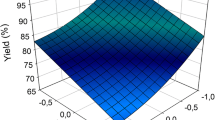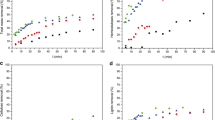Abstract
Non-isothermal autohydrolysis treatments of Eucalyptus globulus wood were carried out in batch reactors in order to assess the kinetics of hemicellulose degradation, as well as the effects caused on cellulose and lignin. Experiments were carried out at a liquor to wood ratio of 8 g/g, and two heating profiles were explored. The maximum temperature considered was 224 °C, and the longest reaction time was 0.94 h. The experimental variables considered were solid residue yield, solid residue composition and composition of liquors. Up to 90.4% of the initial xylan was removed in treatments, which also caused some delignification (up to 13.8% of the initial lignin was removed), whereas cellulose was almost quantitatively retained in solid phase. The conversion of xylan into xylooligomers, with further hydrolysis to xylose and decomposition of this sugar into furfural was assessed by means of a kinetic model based on sequential, first order reactions involving kinetic coefficients with Arrhenius-type dependence on temperature.
Similar content being viewed by others
Author information
Authors and Affiliations
Additional information
Received 23 November 1999
Rights and permissions
About this article
Cite this article
Garrote, G., Parajó, J. Non-isothermal autohydrolysis of Eucalyptus wood. Wood Science and Technology 36, 111–123 (2002). https://doi.org/10.1007/s00226-001-0132-2
Issue Date:
DOI: https://doi.org/10.1007/s00226-001-0132-2




